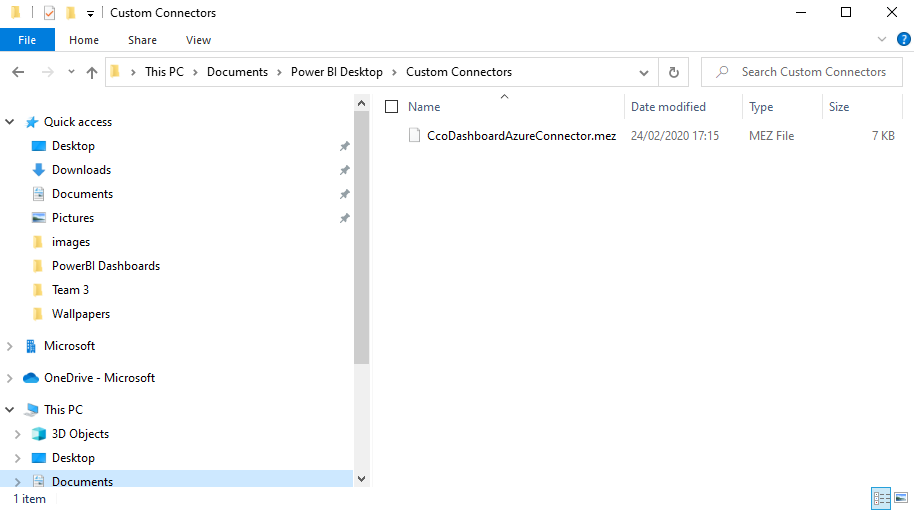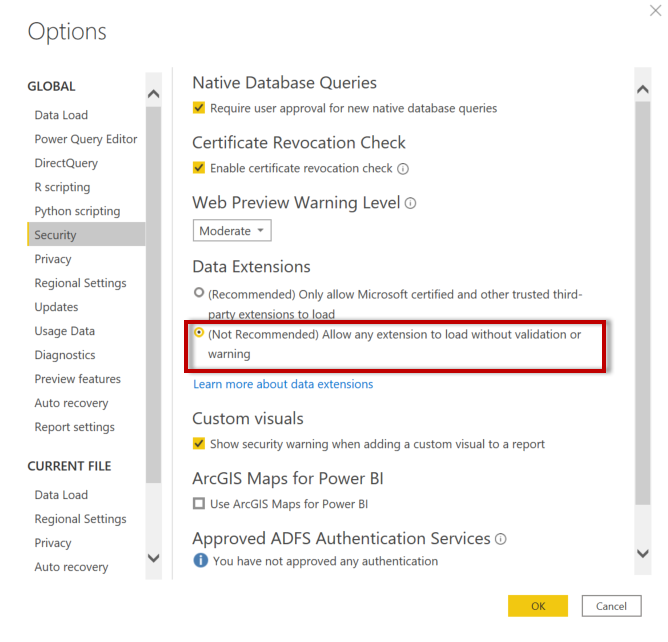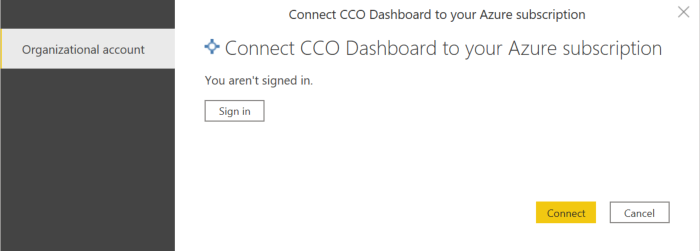-
Notifications
You must be signed in to change notification settings - Fork 215
Governance Dashboard Deployment Guide
- Requirements
- Resource Providers requirements
- Installing the custom connector
- Setting up the Azure Governance Dashboard
- The CCO Azure Governance Dashboard is a Power BI Template that requires you to download and install the Microsoft Power BI Desktop Edition from the Microsoft Store. Below you can find the minimum requirements to run the Dashboard:
- Windows 10 version 14393.0 or higher.
- Internet access from the computer running Microsoft Power BI desktop.
- An Azure account on the desired tenant space with permissions on the subscriptions to read from the Azure Services described above.
- Install the custom connector and allow the use of any extension to load data without validation or warning.
Although some of the Resource Providers might be enabled by default, you need to make sure that at least the Microsoft.Security resource provider is registered across all the subscriptions that you plan analyze using the Dashboard.
Registering this Resource Provider has no cost or performance penalty on the subscription:
- Click on Subscriptions.
- Click on the Subscription name you want to configure.
- Click on Resource Providers.
- Click on Microsoft.Security and Register.
The CCO Azure Governance Dashboard requires to install the Power BI Custom Connector located in the same folder as the CCO Governance Dashboard: (CCoDashboardAzureConnector.mez). This Custom Connector allows us to leverage information from Azure Management REST APIs that require POST methods and error handling.
To install the custom connector you must copy the file CCoDashboardAzureConnector.mez from the ccodashboard/dashboards/CCODashboard-Governance/ folder to the folder that Power BI creates by default in the Documents folder in your PC. If this folder doesn't exist, you can create a new one with this name.
The path should be C:\Users%username%\Documents\Power BI Desktop\Custom Connectors .
Note: Recently some users are having problems with the connector and Power BI due One Drive. If this is the case, the folder structure needs to be created within OneDrive folder ....\Documents\Power BI Desktop\Custom Connectors and after that the custom connector will be recognized.
Then go to Power BI Options and under Global category in the Security section, select (Not Recommended) Allow any extension to load without validation or warning and click OK.
Download and open the .pbit file from CCODashboard-Governance folder.
Before start loading data you need to select which type of environment you're using:
- Select "Global" for Microsoft Azure commercial environments. This is the default selection.
- Select US-Government for Azure Us government services. Azure Government is a separate instance of the Microsoft Azure service. It addresses the security and compliance needs of United States federal agencies, state and local governments, and their solution providers.
- Go to File -> Options -> Privacy and set to Always ignore privacy level settings.
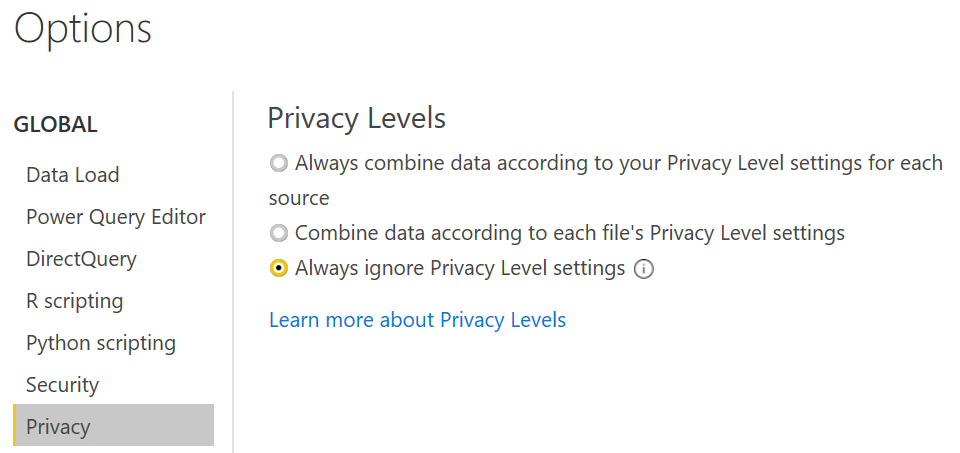
By default, the template doesn't have any Azure Account credentials preloaded. Hence, the first step to start loading subscriptions data is to sign-in with the right user credentials.
IMPORTANT NOTE: Power BI Desktop caches the credentials after the first logon. It is important to clear the credentials from Power BI desktop if you plan to switch between Azure Global and any other region like US Government or China. The same concept applies if you plan to switch between tenants. Otherwise, the staged credentials will be used again for the different Azure environments and the authentication or data load process will fail.
In some cases, old credentials are cached by previous logins using Power BI Desktop and the dashboard might show errors or blank fields.
- Click on Data sources in Current file/Global permissions
- Click on Clear Permissions.
- Click on Clear All Permissions.
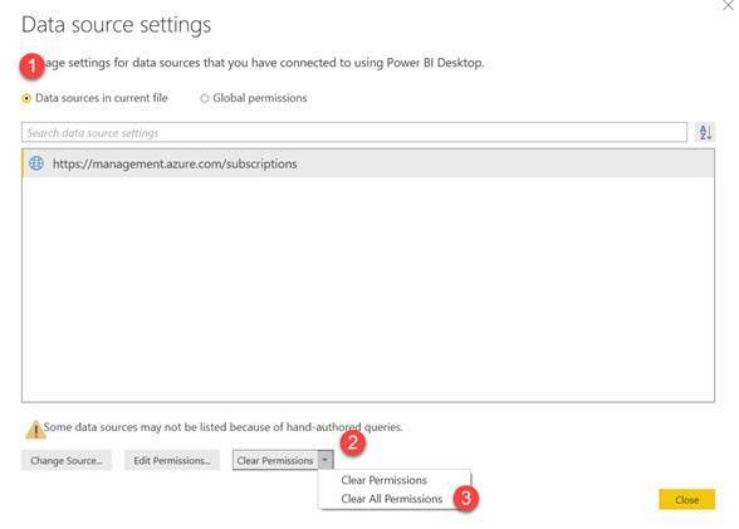
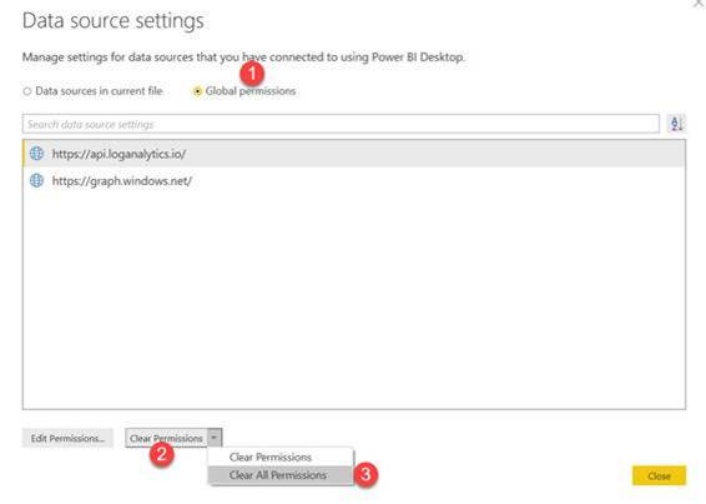
If the permissions and credentials are properly flushed it should ask you for credentials for each REST API and you will have to set the Privacy Levels for each of them.
- Click on Refresh.
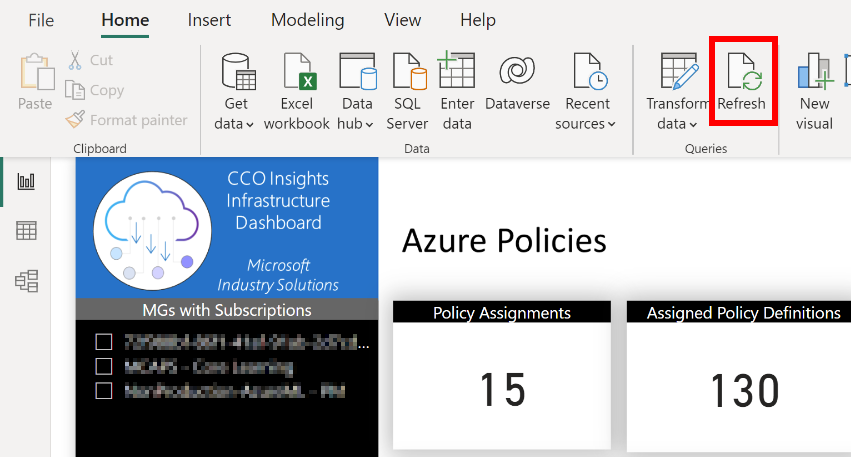
- Click on Organizational Account.
- Click on Sign in.
- Click on Connect.
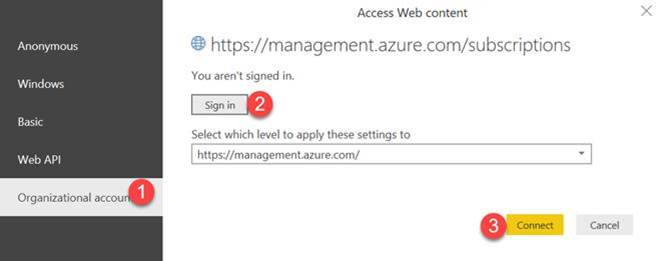
- Click on Organizational Account.
- Click on Sign in.
- Click on Connect.
